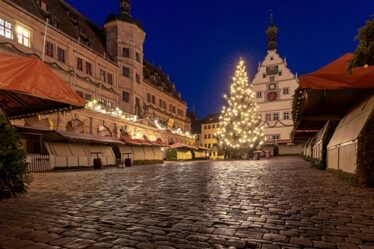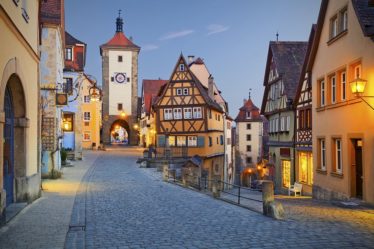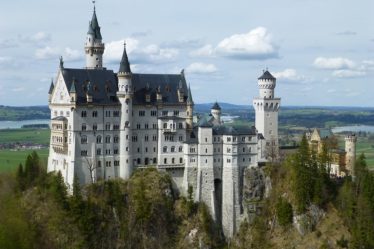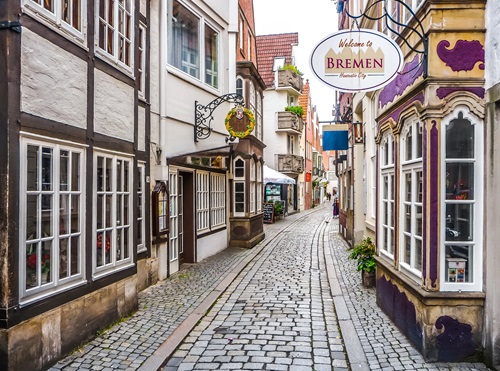
Germany is a paradise for history lovers, with cities offering centuries of history and culture. From medieval castles and half-timbered houses to magnificent palaces and museums – there are countless places to discover. In this article, we present seven of the best cities in Germany that will take you on a fascinating journey through time. Discover historic old towns, impressive buildings, and learn more about significant events and personalities that have shaped German history. Pack your bags and get ready to dive into the past!
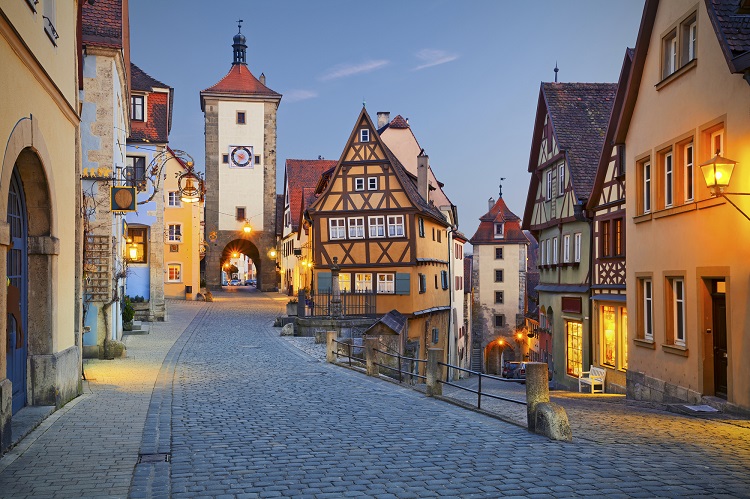
1.)
Rothenburg ob der Tauber
Rothenburg ob der Tauber is as much a town as it is concentrated history. The old town is still largely of medieval origin, newer buildings fit very well into the overall picture. The historic city fortifications can be walked through and there are numerous other historic buildings to discover. In addition, Rothenburg ob der Tauber has several museums, some of which have a medieval connection, making it the perfect place for your very own history lesson.
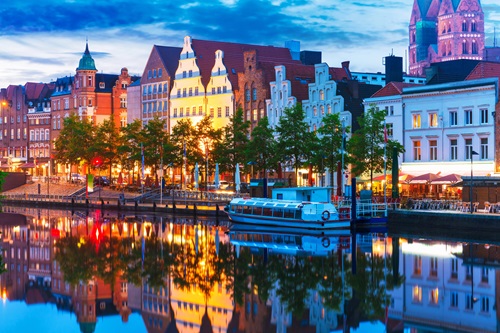
2.) Lübeck
The city of Lübeck has many nicknames, and rightly so. It was called the "Mother of the Hanseatic League" and later named the "Queen of the Hanseatic League" due to its trading power, its geographical location, which favoured Baltic trade, but above all due to clever merchants who had a decisive influence on the Hanseatic League's trade policy.
The city achieved great wealth between the 13th and 16th centuries, which only began to wane with the end of the Hanseatic League.
Even today, most of the historic town centre has been preserved and invites visitors to stroll around. From the city's landmark, the Holsten Gate, to St. Mary's Church, to historic merchants' houses and the Lübeck Salt Warehouse, history becomes visible here. Discover the old town of Lübeck, which has been a UNESCO World Heritage Site since 1987, or wander through the harbour museum on the Trave. Visit the House of the Shipowners' Society, which has remained almost unchanged since 1538, or learn the whole story about the rise and fall of the Hanseatic League in the European Hanse Museum.
More than a thousand historic buildings in the medieval old town alone make the Hanseatic city of Lübeck one of the best cities to visit in Germany if you are interested in history, the Hanseatic League or architecture. Here you will experience a city full of unique buildings and historical significance from the 12th century onwards.
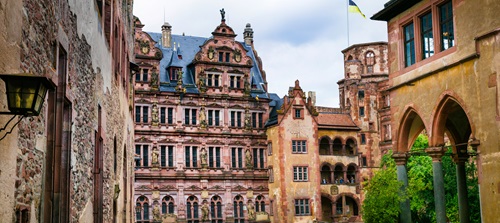
3.) Heidelberg
Heidelberg offers stunning views in a fantastic landscape right on the Neckar River. Together with the rich history of the region, as well as art and architecture from several centuries. All this without missing the advantages of a big city.
Enjoy a walk across the old bridge into the fascinating old town with its baroque buildings or book a city tour to make sure you don't miss a single detail. Discover the oldest university in Germany as well as five churches in different architectural styles and with an eventful history. Explore Heidelberg Castle and visit the annual Heidelberg Castle Festival, where the castle becomes an open-air stage. If you want to immerse yourself in history, this is the place to be.
Also built in the Baroque style is the city palace Palais Morass, which today houses the Kurpfälzische Museum Heidelberg. This museum combines the huge art collection of the city of Heidelberg with cultural history and offers a detailed tour of the city's history.Some rooms are furnished according to 19th-century living styles and give you a feel for what living spaces looked like at that time. A visit to this museum is therefore on the wish list of history and art fans alike.
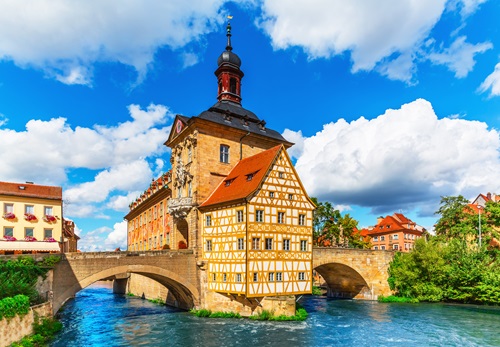
4.) Bamberg
The city of Bamberg is more than just remarkable. A fascinating old town awaits you, 140 hectares of which are UNESCO World Heritage Sites.The oldest buildings are almost 1,000 years old, such as the core of the St. Jacob's Church or the medieval Altenburg, which is excellently preserved for this great age.
Bamberg has a strong arts and culture scene. Several theatres, numerous museums, an annual Tucher blues and jazz festival are just some of the highlights to be mentioned here.
Those planning to travel to Bamberg in the summer have the opportunity to experience the Bamberg zaubert street and variety festival. Magicians, acrobats as well as jugglers and many other small artists show their art on numerous stages in the city free of charge.
Various tours offer you the opportunity to let yourself be completely enchanted by Bamberg. Immerse yourself in the Middle Ages and experience parts of history. Find out how the Bamberg witch trials took place and why they happened. Or how about visiting places that Henry II, the future Emperor of the Holy Roman Empire, had visited 1000 years earlier?
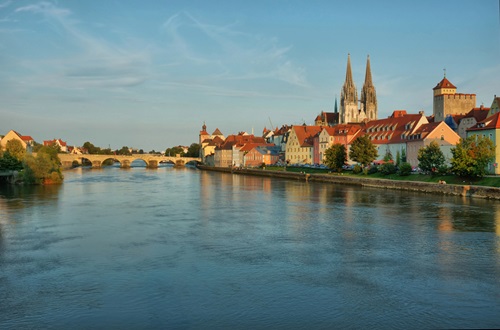
5.) Regensburg
Regensburg achieved great wealth in the High Middle Ages, as the city was for a long time a hub of long-distance trade, for example with Paris, Kiev and Venice. This wealth led to the construction of numerous Gothic and Romantic buildings, which still characterise the historic city centre today. The Stone Bridge, which was completed in 1146 and is still in use, is a rare masterpiece of medieval architecture.
Cross the Danube on the bridge that allowed the crusading armies led by Konrad III and Emperor Friedrich I Barbarossa to cross the river. Walk in awe through one of the two most important Gothic cathedrals in all of Germany. Take time to enjoy the art and architecture of the Middle Ages. Follow the history of the city in the Regensburg Historical Museum from its beginnings, through its free aspirations, to modern times.
For classic entertainment, visit the Regensburg Theatre with its theatre, opera, dance and concert performances. At Whitsun there is also the Tage Alter Musik, a music festival that revolves around music from the period up to around 1750. The performances of this festival take place at historical locations in the city of Regensburg.

6.) Bremen
Bremen offers much more than the world-famous Bremen Town Musicians. As a city that opposed the church in its quest for freedom as early as the Middle Ages and experienced a great economic boom when it joined the Hanseatic League, it is characterised by the buildings of wealthy citizens from several centuries.
Explore an entire historic district whose oldest houses were built around 1400. Learn more about the history of the Roland statue on a guided tour, experience the atmosphere in Bremen Cathedral with its breathtaking Romanesque, partly Gothic architecture. Or enjoy a leisurely stroll through Bremen's ramparts before taking a break at the Wallmühle café.
Several museums in Bremen are also highly recommended for history buffs. The history of Bremen is covered in detail in the Focke Museum, while you can learn all about Bremen's church history in the Cathedral Museum. An art collection whose oldest pieces date back to the Middle Ages can be seen in the Ludwig Roselius Museum in Böttcherstraße. As you can see, there is something for every history buff in Bremen, making it one of the best 7 cities to visit in Germany for history lovers.
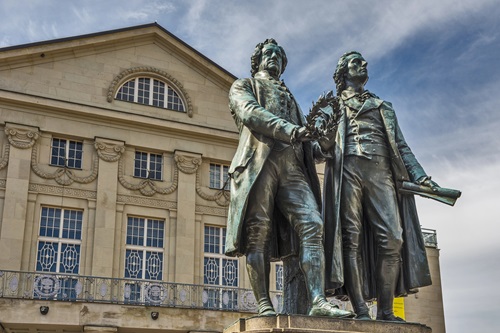
7.) Weimar
The city of Weimar stands in particular for art and culture, as well as their history. The promotion of various arts, often supported by the respective rulers of Weimar, led to a flourishing of art and culture after the Middle Ages. Numerous artists spent part of their lives in the city. Among the most famous are Goethe, Schiller and Nietzsche.
Today you can visit Johann Wolfgang Goethe's residence. Together with its annexe, it forms the Goethe National Museum, which deals in particular with Weimar Classicism.
If you are specifically interested in history, there are four museums to choose from:
The Museum of Prehistory and Early History of Thuringia, which displays archaeological finds such as Stone Age tools to 3rd and 4th century burial sites.
There is also the Weimar City Museum and the Weimar House History Experience Museum. While the latter is an easy introduction to the city's history, using elaborate dioramas, the former gives a detailed account of the history.
Last but not least, Weimar also has the House of the Weimar Republic, which focuses on the first German democracy.
The rich offer of art and culture makes every day in Weimar a new experience for you.
Pin for later!

